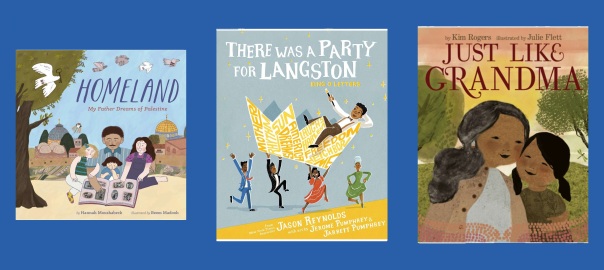A couple of years back I published 17 Blues and Jazz Songs by Black Women to Add to Your Black History Month Playlist because I think music is a beautiful way to explore history and blues and jazz are genres firmly rooted in Black history. I’m once again sharing a list of some of the incredible Black women throughout history who have impacted the genres of gospel and soul, genres that cannot be separated from Black history. These genres and the artists that pioneered them are fluid enough that there are many artists featured known for multiple genres, but I have chosen to focus here on gospel and soul and I’ve chosen to avoid repeating artists who appeared in the previous list. The focus is once again music of the twentieth century, but I have tried to include a variety of examples, all ones that I recommend with sincerity and love.
Although I’m sharing this quite late into Black History Month, I also think it’s important to celebrate Black women as part of Women’s History Month, which is March.
Sister Rosetta Tharpe – “Strange Things Happening Every Day”
Sister Rosetta Tharpe (1915-1973) was a singer, songwriter, and guitarist from Arkansas known for her work in gospel and her significant influence on many other genres, like rhythm & blues and rock & roll, earning her titles such as “the original soul sister” and “the Godmother of rock and roll.” “Strange Things Happening Every Day” is a traditional African American spiritual that Sister Rosetta Tharpe made famous in 1944 with her iconic vocal style and guitar playing.
Jackie Shane – “Any Other Way”
Jackie Shane (1940-2019) was a Tennessee-born singer of soul and rhythm & blues who gained popularity in Toronto, Canada in the 1960s. She was a pioneering trans performer who turned down early an opportunity to appear on the Ed Sullivan Show when it came with the insulting condition that she present as male for the performance. Shane’s version of William Bell’s “Any Other Way” (1962) was a hit in Canada and the US.
Arizona Dranes – “I Shall Wear A Crown”
Arizona Dranes (1889 or 1891-1963) was a gospel singer and pianist from Texas. She was born blind and learned to play piano in her early teens. She was one of the earliest women to become a professional gospel singer, and incorporated boogie and ragtime stylings into her piano work, which would go on to influence later gospel artists. Dranes recorded the traditional African American gospel song “I Shall Wear A Crown” in the late 1920s.
Minnie Riperton – Lovin’ You
Minnie Riperton (1947-1979) was a soul singer from Chicago, Illinois known for her incredible five octave vocal range. She was one of the earliest celebrities to go public with a diagnosis of breast cancer, which ultimately took her life when she was only 31 years old. Riperton, mother of comedian Maya Rudolph, was best known for her iconic 1975 hit “Lovin’ You” which she co-wrote with her husband.
Clara Ward – “How I Got Over”
Clara Ward (1924-1973) was a Philadelphia-born gospel singer and songwriter who earned success performing as the leader of the Famous Ward Singers, although her mother first formed the group when Ward was only a young child. She also had a highly successful solo career. She was only 48 years old when she died of several strokes, and Aretha Franklin performed at her funeral. “How I Got Over” is a 1951 gospel song composed by Ward herself, and it is one of the best selling gospel songs of all time.
Aretha Franklin – “Call Me”
Aretha Franklin (1942-2018) was a singer, songwriter, and pianist from Tennessee, famous for singing in a variety of styles but ultimately known as the Queen of Soul. Franklin got her start singing gospel music in her father’s church, but grew up to be one of the most successful soul singers of all time. Recorded in 1969, “Call Me” is a song that Franklin wrote, sang, and played piano for.
Roberta Martin – “Try Jesus”
Roberta Martin (1907-1969) was a gospel singer, pianist, composer, arranger, and choral organiser from Arkansas. Through her group the Roberta Martin Singers, she launched many other careers in gospel. Martin composed dozens of songs during her lifetime, and she arranged and published hundreds more. The first song she composed (in 1943) was “Try Jesus.”
Ruby Johnson – “Callin’ All Boys”
Ruby Johnson (1936-1999) was a soul singer born in North Carolina. One of nine children, she was raised Jewish and grew up singing in her temple choir. She started singing soul and rhythm & blues after finishing high school, and had a modest recording career throughout the 1960s. Despite her talent, her career didn’t carry beyond the 60s, and she went on to work for the government. “Callin’ All Boys” was her debut single, released in 1960.
Shirley Caesar – “Hold My Mule”
Shirley Caesar (1938-) is a North Carolina-born gospel singer. From a musical family, she sang throughout her childhood, and when she was 19 years old, she successfully approached Albertina Walker about joining the gospel group the Caravans. She has had a wildly successful solo career since the 70s. Throughout Caesar’s decades long career, she has been known as the Queen of Gospel and the First Lady of Gospel. Her 1988 song “Hold My Mule” has become more famous as the much memed “You Name It!” (from DJ Suede the Remix God), the original song is a lively, story-based tune.
Jackie Moore – “Precious Precious”
Jackie Moore (1946-2019) was a soul and rhythm & blues singer from Florida known for her work in Southern soul, although she did also have a moderate disco hit (“This Time Baby,” 1979) that also appeared in Grand Theft Auto: Vice City Stories. She debuted in 1969, and her career lasted well into the 80s. Moore’s song “Precious Precious” was released in 1971, and appeared on her 1973 album Sweet Charlie Babe. It was one of her most successful releases.
Mahalia Jackson
Mahalia Jackson (1911-1972) was a New Orleans-born Chicagoan gospel singer. She was one of the most important vocalists of the 20th century and helped to popularise the use of blues style in gospel music. The granddaughter of enslaved people and raised in poverty, Jackson was heavily involved in the Civil Rights movement, friends with Martin Luther King Jr, and performed at the March on Washington in 1963. Jackson recorded the most famous version of “Move On Up A Little Higher” in 1947, which became the bestselling gospel song of all time.
Betty Harris – “I’m Evil Tonight”
Betty Harris (1939-) is a soul singer from Florida, although she would gain the bulk of her success in the New Orleans scene. Although she only had a few commercial hits during her career in the 1960s, she is widely acclaimed among fans of soul music as one of the greats. In 1965 Harris released her “I’m Evil Tonight” as a B-side track to “Nearer to You,” which was her first single with the New Orleans label Sansu.
Faye Adams – “Shake A Hand”
Faye Adams (1923-Unknown) was a gospel and rhythm & blues singer from New Jersey, although she is also considered a very early example of soul. She also performed under the names Faye Scruggs and Fannie Jones. Music writer and historian Marv Goldberg located a source that indicates she died in 2016, but was unable to verify her death with certainty. Adams’ 1953 song “Shake a Hand” was a gospel and rhythm & blues crossover song that is considered by the Acoustic Music organisation to be among the “first clear evidence of soul music.”
Gladys Knight – “Midnight Train to Georgia”
Gladys Knight (1944-) is a soul singer from Atlanta, Georgia known as the Empress of Soul. Her career has spanned decades, both as a solo artist and performing with her family group Gladys Knight & the Pips. She is also an award-nominated actor for film and television. Knight famously sang the Grammy-winning song “Midnight Train to Georgia” in 1973 with the Pips, it was inducted into the Grammy Hall of Fame, and it’s her signature song.
Albertina Walker – “I Can Go To God In Prayer”
Albertina Walker (1929-2010) was a gospel singer from Chicago known as the Queen of Gospel Music. She grew up singing in her church and participated in several gospel groups during her early years as a professional, and after encouragement from Mahalia Jackson went on to lead the Caravans (and later helped Shirley Caesar kick off her career with them). Walker also went on to have a successful solo career, and would perform for multiple US presidents as well as Nelson Mandela. Walker recorded “I Can Go To God In Prayer” in 1981.
Patti LaBelle – “Love, Need and Want You”
Pattie LaBelle (1944-) is a Philadelphia-born soul and rhythm & blues singer known as the Godmother of Soul. She started out singing in her church, although she grew up listening to secular music as well. She would eventually front the Blue Belles, which later became known as just Labelle. She has had an extensive singing career as a solo artist as well. LaBelle recorded her 1983 hit “Love, Need and Want You” for her album I’m In Love Again.
Marion Williams – “Standing Here Wondering Which Way to Go”
Marion Williams (1927-1994) was a Florida-born gospel singer. Williams learned a number of styles growing up, such as jazz, blues, and calypso, but she would stay with gospel throughout her career. When she was about 19 years old, she performed in Philadelphia, where she was discovered by Clara Ward and joined the Ward Singers. She also helped found Stars of Faith before embarking on a solo career in the 1960s. Williams recorded “Standing Here Wondering Which Way to Go” in 1969.
Irma Thomas – “Don’t Mess With My Man”
Irma Thomas (1941-) is a soul singer from New Orleans. She has come to be known as the Soul Queen of New Orleans. She started out singing in her church choir, and although she married very young (by the time she was 19 she had been married twice and had four children), she would occasionally perform, which eventually led to her getting a record deal. Her first single was “Don’t Mess With My Man” in 1959.

